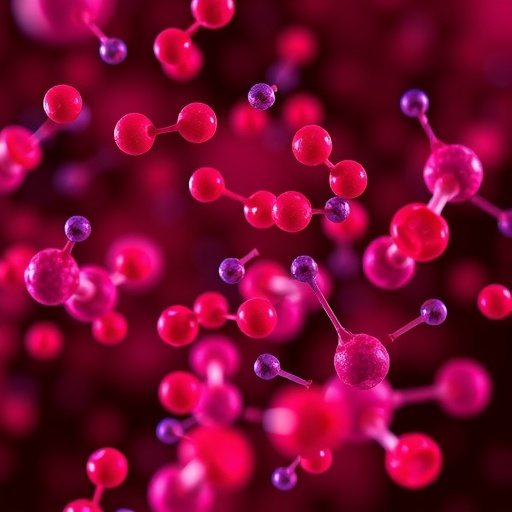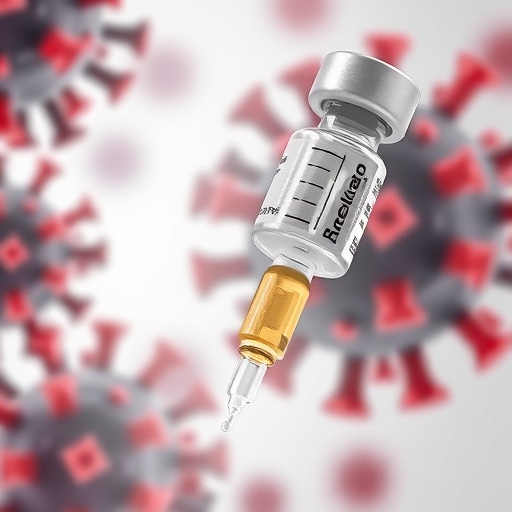In the realm of forensic science, the accurate identification of biological materials at a crime scene is paramount. A recent breakthrough in this field has emerged from the pioneering research conducted by Yang, Butler, Monier, and colleagues, focusing on the complex task of distinguishing menstrual blood from other bodily fluids. Utilizing cutting-edge proteomic mass spectrometry techniques, their study presents a transformative approach that could revolutionize forensic investigations, particularly in cases involving sexual assault where precise bodily fluid identification is critical.
Traditional methods for detecting menstrual blood have largely relied on presumptive chemical tests, which can misidentify or fail to distinguish menstrual blood from peripheral blood or other fluids like vaginal secretions. These conventional approaches often lack the specificity and sensitivity required to withstand the rigorous scrutiny of court admissibility. In response, the research team employed advanced proteomic mass spectrometry to delve deeper, analyzing the proteomic profile at a molecular level to identify unique biomarkers exclusive to menstrual blood.
Proteomic mass spectrometry refers to the powerful analytical technique used to identify and quantify proteins by measuring their mass-to-charge ratios. This method allows scientists to detect distinct protein signatures that are not discernible through traditional means. By applying this technology to menstrual blood, the researchers uncovered specific proteins that are either uniquely expressed or present in significantly different abundances compared to other bodily fluids. These proteins serve as biological fingerprints, enabling a definitive identification of menstrual blood with unparalleled precision.
The study meticulously cataloged the proteomic profiles of menstrual blood samples collected from volunteers, comparing them against peripheral blood and vaginal fluid samples. One of the most striking findings was the identification of several proteins linked to the endometrial lining — the tissue that sheds during menstruation. These proteins were consistently present only in menstrual blood samples, offering a reliable molecular signature that forensic scientists could harness for discrimination purposes.
Furthermore, this method mitigates the common issues of sample degradation and contamination, which often plague forensic investigations. The robustness of proteomic analysis means that even trace amounts of menstrual blood on various substrates or aged samples can still be accurately identified. This capability significantly expands the timeframe and contexts in which menstrual blood can be detected, thus providing investigators with a more comprehensive toolkit for evidence analysis.
In addition to improving identification accuracy, the proteomic markers also provide insight into the physiological state of the donor. Preliminary data suggests that variations in the expression of certain proteins may correspond to different phases of the menstrual cycle, hinting at the potential to extract temporal information about when menstrual blood was deposited at the scene. Though still in the early stages, this opens exciting avenues for forensic timelines and event reconstruction.
The implications of these advances are profound in legal and investigative contexts. The ability to categorically identify menstrual blood can strengthen the evidential value in sexual assault cases, helping to clarify or corroborate victim and suspect testimonies. It addresses longstanding challenges in forensic casework where the presence of menstrual blood versus peripheral blood could impact interpretations of sexual activity, consent, and assault chronology.
Beyond forensic science, the research highlights the broader capabilities of proteomic technologies in biological fluid identification. It underscores a growing trend where molecular profiling is becoming essential for applications in medicine, anthropology, and forensic pathology. The refinement of these techniques promises a new era of precision in biological evidence analysis, moving away from presumptive and subjective tests towards objective, data-driven conclusions.
The comprehensive approach undertaken in this work included rigorous validation protocols, ensuring reproducibility and reliability across diverse sample sets. The researchers emphasized the need for standardized databases of proteomic profiles for various fluids, advocating for the development of forensic kits that integrate these novel biomarkers for routine laboratory use. Such standardization would democratize access to high-precision forensic tools beyond research settings.
In summary, the identification of menstrual blood markers through proteomic mass spectrometry represents a significant leap forward in forensic methodology. By pinpointing unique protein markers associated with menstruation, the study by Yang and colleagues provides a scientifically robust framework that enhances the sensitivity and specificity of menstrual blood detection. This advancement not only empowers forensic investigators but also contributes to the pursuit of justice in sensitive and complex cases.
Looking ahead, future research efforts will likely focus on expanding the proteomic dataset to account for inter-individual variability, environmental influences, and potential cross-reactivity with other biological substances. Explorations into miniaturized and portable mass spectrometry devices may also enable on-site testing, drastically reducing analysis times and streamlining investigative workflows.
Moreover, the integration of this approach with complementary molecular and biochemical methods could yield multi-modal forensic analysis platforms, combining proteomic, genomic, and metabolomic data streams. Such convergence promises unparalleled resolution in biological evidence characterization, setting new standards for accuracy and reliability in forensic science.
This research undeniably pushes the boundaries of what is achievable in the forensic examination of biological fluids. It serves as a compelling example of how high-resolution molecular technologies continue to transform traditional disciplines. With ongoing innovation and collaboration across forensic, clinical, and technological fields, the forensic identification of bodily fluids including menstrual blood is poised for a remarkable evolution.
Subject of Research: Identification of menstrual blood markers using proteomic mass spectrometry in forensic analysis.
Article Title: Identification of menstrual blood markers by proteomic mass spectrometry.
Article References:
Yang, H., Butler, E., Monier, S. et al. Identification of menstrual blood markers by proteomic mass spectrometry. Int J Legal Med (2025). https://doi.org/10.1007/s00414-025-03655-3
Image Credits: AI Generated
DOI: https://doi.org/10.1007/s00414-025-03655-3
Tags: advanced analytical techniques in forensicsbiological material analysiscourt admissibility in forensic evidencedistinguishing bodily fluids in investigationsforensic sciencemenstrual blood identificationprecision in forensic investigationsprotein signatures in bodily fluidsproteomic mass spectrometry techniquessexual assault evidencetraditional chemical tests limitationsunique biomarkers for menstrual blood





